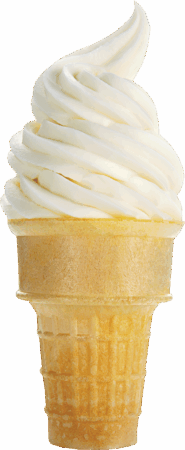Frozen treats are a welcome indulgence when temperatures rise. Ice cream, gelato and other cold treats can quickly cool a person down on a hot day.
According to the National Association of Convenience Stores (NACS), sales of packaged ice cream rise along with the outdoor temperatures, with the summer months being peak sales for the category.
Individuals can choose from a variety of frozen desserts when the desire for something cold and sweet arises. People may ponder what distinguishes one frozen dessert from another. Here’s a breakdown of what makes these desserts unique, courtesy of Business Insider, ColdSnap and Webstaurant Store.
Ice cream
Ice cream has to be made with at least 10 percent milkfat to be labeled as ice cream, according to the U.S. Food and Drug Administration. Ice cream is churned as it is frozen to provide a lighter texture. “Premium” ice cream will have a higher amount of milkfat, typically between 12 and 15 percent. Premium products also are denser with less air incorporated.
Custard
Although ice cream and custard are made from many of the same ingredients, frozen custard traditionally contains egg yolks and has less air churned into the mixture. This provides a denser, creamier mouthfeel.
Gelato
Gelato may be affectionately known as ice cream’s Italian relative. This frozen dessert is made similarly to ice cream but with less cream, more milk and more sugar. Gelato has little to no air whipped into the product; it is churned more slowly to give it a dense texture. Also, it should be served at a warmer temperature to create more enjoyment.
Sorbet
Sorbet is a nondairy frozen dessert made using frozen juices, purees and other flavorings, including wine. Sorbet is a light and refreshing alternative to ice cream. The first ice creams of record were more similar to sorbet than modern dairy-based treats.
Sherbet
Whether you call it sherbet or “sherbert,” this is another fruit-forward frozen treat that is similar to sorbet. However, sherbet includes a little bit of dairy.
Soft serve
Although it may be known as ice cream, soft serve is a lighter textured frozen dessert that differs a bit from its “hard” ice cream counterpart. It features more air and less fat than ice cream, and the mixture of ingredients is constantly turning and dispensed right from a machine. Soft serve is kept at a slightly warmer temperature than ice cream to maintain a soft consistency.
Frozen yogurt
The process of creating frozen yogurt is akin to making ice cream, except the ingredients also will include cultured milk (yogurt) and probiotics. Some people view frozen yogurt as a healthier option than ice cream. Frozen yogurt does not have a minimum fat requirement, and comes in a variety of flavors.
The time for frozen treats is heating up. Understanding the subtleties between various cold treats may help people make more informed dessert decisions.




